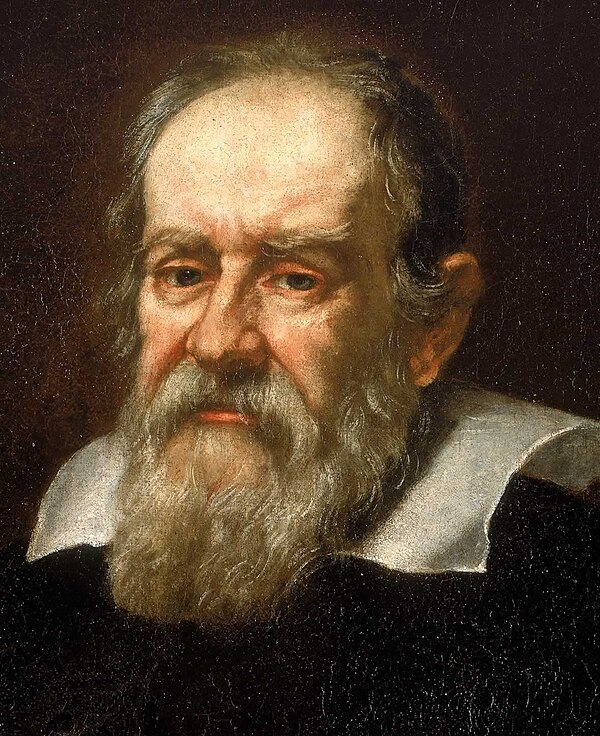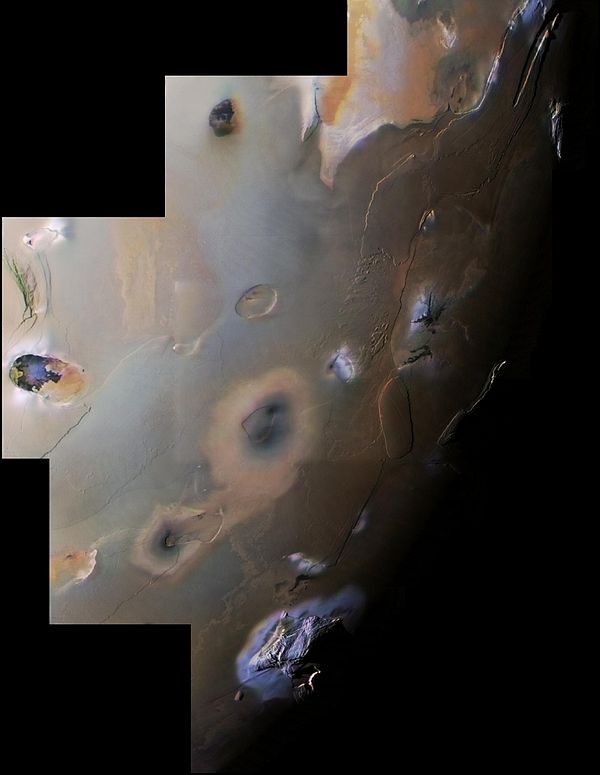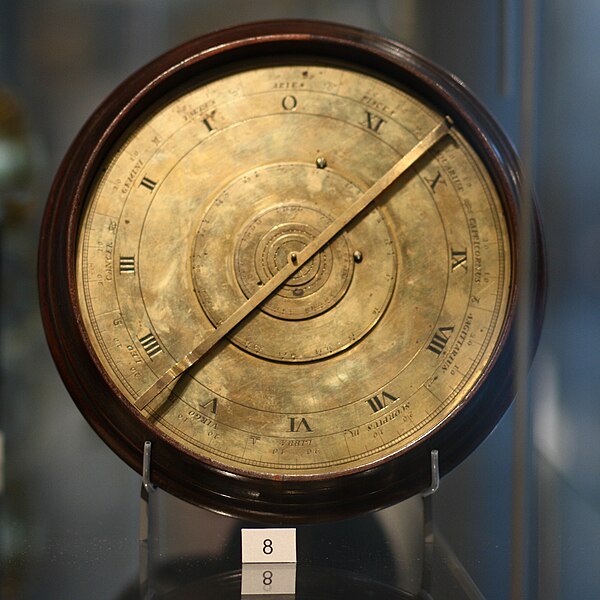Io (moon)
Videos
Page
Io, or Jupiter I, is the innermost and second-smallest of the four Galilean moons of the planet Jupiter. Slightly larger than Earth's moon, Io is the fourth-largest moon in the Solar System, has the highest density of any moon, the strongest surface gravity of any moon, and the lowest amount of water by atomic ratio of any known astronomical object in the Solar System. It was discovered in 1610 by Galileo Galilei and was named after the mythological character Io, a priestess of Hera who became one of Zeus's lovers.

Enhanced color image of Io from the Galileo spacecraft, taken in 1999.

Galileo Galilei, the discoverer of Io

Voyager 1 mosaic covering Io's south polar region. This includes two of Io's ten highest peaks, the Euboea Montes at upper extreme left and Haemus Mons at bottom.

Enhanced-color Galileo image showing a dark spot (just lower-left of center, interrupting the red ring of short-chain sulfur allotropes deposited by Pele) produced by a major eruption at Pillan Patera in 1997
Galilean moons
Videos
Page
The Galilean moons, or Galilean satellites, are the four largest moons of Jupiter: Io, Europa, Ganymede, and Callisto. They are the most readily visible Solar System objects after the unaided visible Saturn, the dimmest of the classical planets, allowing observation with common binoculars, even under night sky conditions of high light pollution. The invention of the telescope enabled the discovery of the moons in 1610. Through this, they became the first Solar System objects discovered since humans have started tracking the classical planets, and the first objects to be found to orbit any planet beyond Earth.

Montage of Jupiter's four Galilean moons, in a composite image depicting part of Jupiter and their relative sizes (positions are illustrative, not actual). From top to bottom: Io, Europa, Ganymede, Callisto.

Galileo Galilei, the discoverer of the four moons

The Medician stars in the Sidereus Nuncius (the 'starry messenger'), 1610. The moons are drawn in changing positions.

A Jovilabe: an apparatus from the mid-18th century for demonstrating the orbits of Jupiter's satellites